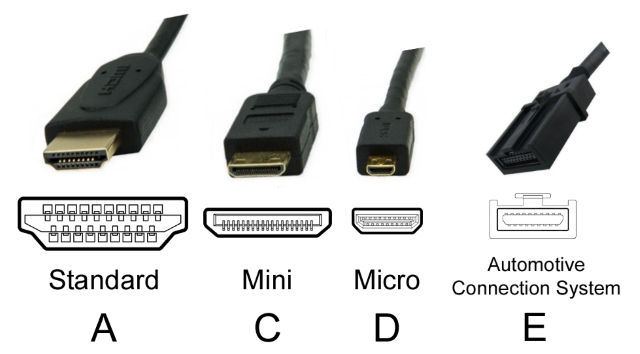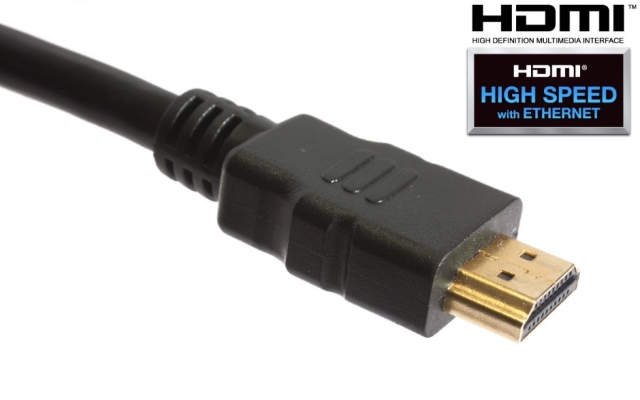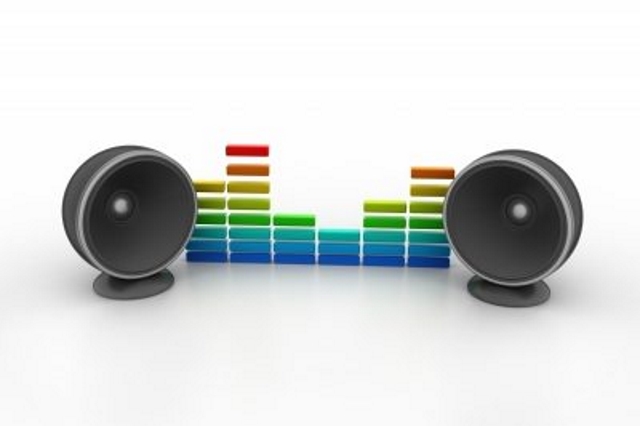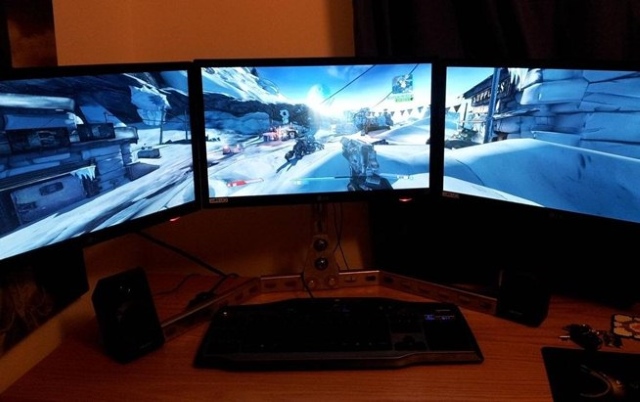DisplayPort vs HDMI: Which Display Interface is the Best?
The technological world is a confusing ane, with alternatives and competition to each and every technological advocacy out at that place. Choosing between dissimilar standards is condign harder, as all the bachelor options seem similar to one another. One such standard is the display interfaces. If you're a normal consumer, I am sure the word display interface would mean HDMI for you. The HDMI standard has become wildly successful being used in TVs, set-top boxes, Blu-ray players, A/V receivers, gaming consoles, camcorders, and even smartphones.
Considering HDMI'due south pervasiveness, I wouldn't blame you for not beingness aware of its biggest competitor – The DisplayPort standard. Like the HDMI standard, both tin can carry HD quality digital video and audio signals, including support for Loftier-bandwidth Digital Content Protection (HDCP), making them a clear winner over the previously used media interface – DVI. But when you pit HDMI with DisplayPort, which one of these interfaces comes out on top? Which i is more superior and flexible than the other? We hope to respond these questions as we bring to our take on DisplayPort vs HDMI.
HDMI vs DisplayPort: Their History
The HDMI (High Definition Multimedia Interface) specification was designed back in 2002 and brought out to production in 2003 by 6 consumer electronics giants: Hitachi, Panasonic, Philips, Silicon Image, Sony, and Toshiba. HDMI Licensing, LLC, which is a subsidiary of Silicon Image, now controls the HDMI specification. Any manufacturer willing to include HDMI ports onto their products needs to pay a royalty to the company.
 Conceptualized in 2006 and finally created in 2008, the DisplayPort specification was developed past the Video Electronics Standards Association (VESA), a large consortium of manufacturers ranging from AMD to ZIPS Corporation, including but not limited to Sony, Panasonic, Silicon Paradigm and Toshiba. The specification still remains under control of VESA only. Different HDMI, DisplayPort is a royalty-costless product.
Conceptualized in 2006 and finally created in 2008, the DisplayPort specification was developed past the Video Electronics Standards Association (VESA), a large consortium of manufacturers ranging from AMD to ZIPS Corporation, including but not limited to Sony, Panasonic, Silicon Paradigm and Toshiba. The specification still remains under control of VESA only. Different HDMI, DisplayPort is a royalty-costless product.

Types of Connectors
The HDMI connectors are all made up of 19 pins but are available in different sizes. Type A (Standard), is the most widely used blazon of HDMI connector, unremarkably establish on TVs, projectors, set-top boxes, and laptops. The Type C (Mini) HDMI connector is used majorly on tablets and laptops having a slim profile or ultrabooks. The Type D (Micro) is likewise used on slimmer tablets and high-end smartphone devices. While HDMI is primarily a consumer-focused product, there exists a Type Eastward HDMI connector also, that is used for automotive purposes.

The DisplayPort connectors have 20 pins and are available in just ii sizes. The DisplayPort (Standard) is used in business-oriented laptops and desktops, though this trend is definitely shifting, with more and more manufacturers including information technology in their mainstream display devices. A smaller alternative to the Standard DisplayPort, the Mini DisplayPort is primarily used in Apple's devices (after 2013) and Microsoft'southward Surface tablets.

Both HDMI and DisplayPort make use of friction lock, which basically refers to maintaining a tight fit that keeps the plug connected to the socket. While no such characteristic has been mentioned in the official standards for either interface, the manufacturers go along to use friction lock along with other proprietary locking mechanisms which are designed to prevent the cables from coming off loose.
Cables
Lets's compare the HDMI and DisplayPort cables, shall nosotros?
-
Types of Cables
HDMI Cables are generally of iv different types, depending upon their bandwidth and Ethernet capabilities:
- Standard HDMI Cable: This cable is sufficient enough for playing videos in 720p or even 1080p resolution
- Standard HDMI Cablevision With Ethernet:The bandwidth and resolution limit remains the same equally the Standard HDMI, except that this cable also adds support for 100 Mbps Ethernet.
- High-Speed HDMI Cable:The bandwidth takes a spring hither, rising to back up resolutions of up to 2160p.
- High-Speed HDMI Cable With Ethernet:The bandwidth and resolution limit remains the same as the High-Speed HDMI, except that this cablevision also adds support for 100 Mbps Ethernet.
At that place are many great HDMI cables available in the market, some of which you can check out hither.

DisplayPort cables, on the other hand, are of 1 blazon just. DisplayPort cables tin exist used to display resolutions up to 3840 by 2160 pixels at a constant refresh rate of 60Hz. Furthermore, it also supports all 3D video formats. That being said, DisplayPort cables are unable to carry Ethernet along with the video data bits.

-
Length
HDMI cables don't take any specified lengths for their cables, although depending upon the material, lengths can vary. As per the HDMI Licensing LLC, HDMI signals transmitted over True cat five or CAT 6 cable can be used for distances of upward to 164 feet, over coaxial cable for upwards to 300 feet, or over fiber for more than 328 feet.
DisplayPort cables, on the other hand, tin support comparatively smaller distances, in order to maintain their high-resolution displays. A passive-copper DisplayPort cable can be used up to l feet and an active-copper DisplayPort cable for 65 feet. Also, the increasing trend of fiber optics has been adopted past DisplayPort likewise, assuasive fiber DisplayPort cables to transmit data over hundreds of feet.
Video Quality
Currently, there are ii versions of HDMI in employ – v1.4, and v2.0. HDMI 1.iv supports resolutions of 4096 x 2160 at 24Hz or 3840 x 2160 at 30Hz, at a maximum bandwidth of 10.two Gbps. HDMI ii.0 takes things to the next level, by maintaining the same resolution merely elevating the refresh rate to 60Hz and also lifting the bandwidth to eighteen Gbps.
Every bit of 2017, a newer version for HDMI – v2.1 has been conceptualized, but it volition just come up into bodily use past fall. The added features of this new version will be that it would support resolutions upwardly to 10K with frame rates of 120 fps, and uplifting the bandwidth to every bit high as 48 Gbps, which is a huge comeback over HDMI two.0's mere 18 Gbps.

As for DisplayPort, there are 3 different versions in use as well, v1.2, v1.three, and v1.4. DisplayPort v1.two tin can support video resolutions of upwardly to 3840 10 2160 pixels (4K) at a refresh rate of 60Hz, and it supports all common 3D video formats. As for bandwidth, it can manage 17.28 Gbps.
On the other hand, DisplayPort v1.3 tin can support resolutions up to 8192 10 4320 (8K) at 30 Hz, or two simultaneous 4K streams. It also doubles the bandwidth to 32.four Gbps.
Finally, expected to exist launched in 2017 is VESA's biggest update, the DisplayPort v1.four, which can support 8K video (7,680 by four,320) at a 120Hz refresh charge per unit, while also raising the bandwidth to 40 Gbps.
Audio Quality
In terms of sound, in that location'due south practically not much to divide the two as both the latest versions of HDMI and DisplayPort support up to eight channels of digital audio at up to 24-fleck and 192kHz. However, the DisplayPort doesn't have an audio return aqueduct. What that means is that you cannot employ your DisplayPort device to send audio information "upstream" to an A/V receiver. In simpler terms, a DisplayPort cannot be used to claw up an external sound system to your Tv set, a feat that HDMI v1.four and above can easily achieve.

Multiple Displays
Limited to a single audio-video stream, HDMI ports allow y'all to apply merely ane system at a time. While that's swell for the unmarried brandish users, the electric current trend seems to be leaning towards multiple displays.

Initially used by stock brokers, gamers and power-users alike are all making the switch to multiple displays. A unmarried DisplayPort interface tin back up up to four monitors at 1920-past-1200-pixel resolution each, or ii monitors at 2560-by-1600-pixel resolution. Each brandish would be receiving independent sound and video streams. Furthermore, using daisy chaining on modern GPUs, 1 can employ as much every bit 6 displays to a single source.
Applications
HDMI is developed primarily for consumer-electronics applications: Blu-ray players, TVs, video projectors, and similar purposes. It has been widely implemented on all media devices around you lot, and yous're most likely to be using one already.

DisplayPort, on the other hand, is designed equally the ultimate display interface for calculator devices. While it does not appeal the users for the general purposes with single displays, the power to hook upwardly multiple monitors to your computational device appeals a lot to gamers, stock brokers, programmers, designers and other ability users.
Run across Besides: 10 Best Gaming Monitors Y'all Can Buy
DisplayPort vs HDMI: Which Interface To Choose?
Considering each ane'south primary uses, both HDMI and DisplayPort are hither to stay and further grow. Most of the manufacturers believe that providing an HDMI interface is enough. Though, as the demand for multiple displays are increasing, nosotros are slowly seeing increased adoption of the DisplayPort interfaces. Although an HDMI port volition satisfy all your interests, at that place's no harm in buying devices with a DisplayPort as well. Its support for multiple displays and other monitors via adapters gives information technology greater flexibility as compared to HDMI ports.
Well, those were my views on DisplayPort vs HDMI brandish interfaces but I'd love to know what you think. Share with us your views to keep the conversation going in the comments section below.
Source: https://beebom.com/displayport-vs-hdmi-display-interface/
Posted by: schneidersubte1982.blogspot.com


0 Response to "DisplayPort vs HDMI: Which Display Interface is the Best?"
Post a Comment